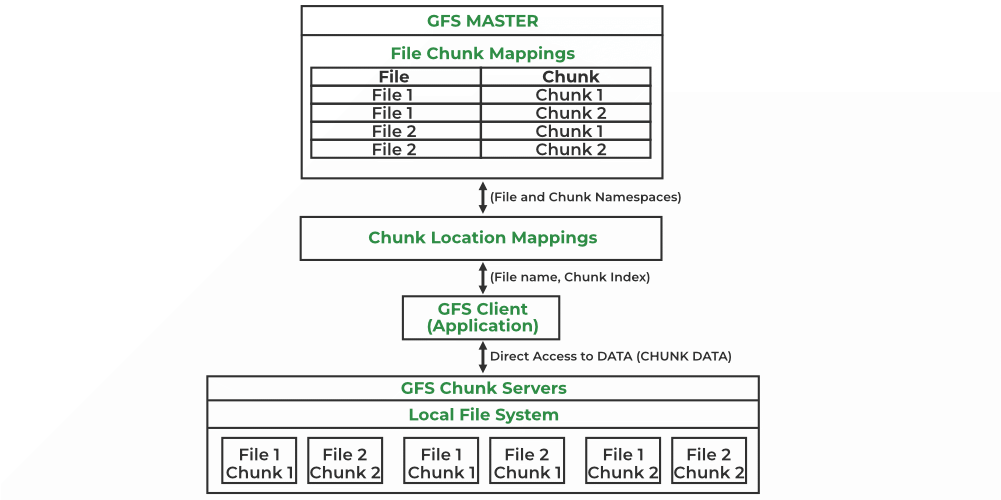【Google库文件与并发编程】:高效处理并发任务的必备技巧
发布时间: 2024-10-17 01:58:23 阅读量: 18 订阅数: 18 


# 1. 并发编程基础与Google库文件概述
并发编程是现代软件开发中的一个重要领域,它使得软件能够有效地处理多任务和并行计算,从而提高性能和响应速度。在本章中,我们将首先介绍并发编程的基础知识,包括进程、线程和协程的概念,以及它们之间的区别和联系。接着,我们将深入探讨Google开发的并发编程库——Google Guava库,它提供了丰富的并发处理工具,如原子操作、并发集合和锁机制等。
## 1.1 并发编程基础
### 1.1.1 进程、线程和协程
在操作系统中,进程是程序的一次执行,它包含了程序代码及其状态信息。线程是进程中的执行单元,它比进程轻量级,共享进程的资源。协程则是一种用户态的轻量级线程,它依赖于线程,但执行效率更高,因为它在用户态进行调度,无需陷入内核。
### 1.1.2 并发与并行
并发指的是两个或多个事件在同一时间段内发生,它们可以是交替执行的,也可以是重叠的。并行则是指两个或多个事件在同一时刻发生,需要多核或多处理器的支持。
### 1.1.3 并发编程的挑战
并发编程面临着资源竞争、同步问题和死锁等挑战。为了有效管理并发性,程序员必须理解和掌握锁、信号量、事件等同步机制。
## 1.2 Google Guava库概述
### 1.2.1 Guava库简介
Google Guava库是Google开发的一个开源Java库,它提供了丰富的工具类和实用方法,用于处理集合、并发编程、缓存、字符串处理等常见任务。
### 1.2.2 Guava并发工具
Guava并发工具包提供了多种并发控制机制,如`LoadingCache`用于缓存加载,`RateLimiter`用于限流,以及用于执行异步任务的`ListeningExecutorService`等。
### 1.2.3 Guava的线程安全集合
Guava提供了一系列线程安全的集合类,如`ThreadSafeList`和`ThreadSafeSet`,这些集合类内部使用锁机制来保证线程安全。
通过本章的学习,读者将建立起对并发编程的基本理解,并了解如何使用Google Guava库来简化并发编程任务。在下一章中,我们将深入探讨Google Guava库在并发编程中的具体应用和并发控制机制。
# 2. Google库文件在并发编程中的应用
在本章节中,我们将深入探讨Google库文件在并发编程中的应用,包括并发控制机制、并发数据结构的使用,以及一些高级特性的介绍。通过本章节的介绍,读者将能够更好地理解如何在实际开发中有效地利用Google库文件来提升并发程序的性能和稳定性。
## 2.1 Google库文件的并发控制机制
Google库文件提供了多种并发控制机制,以帮助开发者管理多线程环境中的资源访问和状态同步。这些机制包括原子操作和锁机制、并发队列和信号量等。
### 2.1.1 原子操作和锁机制
原子操作是并发编程中的基石,它们保证了操作的不可分割性,即在执行过程中不会被其他线程打断。Google库文件中的原子操作通常通过原子变量来实现,这些变量提供了原子读取、原子写入、原子增加等操作。
```cpp
#include <atomic>
#include <thread>
#include <cassert>
std::atomic<int> atomic_value(0);
void increment_atomic_value() {
for (int i = 0; i < 1000; ++i) {
atomic_value.fetch_add(1, std::memory_order_relaxed);
}
}
int main() {
std::thread t1(increment_atomic_value);
std::thread t2(increment_atomic_value);
t1.join();
t2.join();
assert(atomic_value == 2000);
return 0;
}
```
在上述代码中,我们使用`std::atomic`来定义一个原子变量`atomic_value`,并使用`fetch_add`方法来原子地增加其值。两个线程同时对这个变量进行增加操作,最终通过`assert`来验证原子操作的正确性。
### 2.1.2 并发队列和信号量
并发队列和信号量是管理线程间通信和同步的常用工具。Google库文件提供了多种并发队列的实现,例如FIFO队列、优先级队列等。信号量则是一种更通用的同步机制,它可以用来控制对共享资源的访问数量。
```cpp
#include <queue>
#include <semaphore>
#include <thread>
std::queue<int> queue;
std::mutex queue_mutex;
std::condition_variable queue_condition;
std::semaphore queue_items(0);
void producer() {
for (int i = 0; i < 10; ++i) {
std::unique_lock<std::mutex> lock(queue_mutex);
queue.push(i);
queue_condition.notify_one();
queue_items.release();
}
}
void consumer() {
for (int i = 0; i < 10; ++i) {
queue_items.acquire();
std::unique_lock<std::mutex> lock(queue_mutex);
if (!queue.empty()) {
int value = queue.front();
queue.pop();
queue_condition.notify_one();
// Process value...
}
}
}
int main() {
std::thread producer_thread(producer);
std::thread consumer_thread(consumer);
producer_thread.join();
consumer_thread.join();
return 0;
}
```
在上述代码中,我们创建了一个生产者线程和一个消费者线程。生产者线程向队列中添加元素,并通过信号量`queue_items`和条件变量`queue_condition`来通知消费者线程。消费者线程等待信号量,然后从队列中取出元素进行处理。
## 2.2 Google库文件中的并发数据结构
Google库文件提供了多种线程安全的并发数据结构,如线程安全的Map和Set,以及并发队列的实现和使用。这些数据结构简化了并发程序中的数据共享和管理。
### 2.2.1 线程安全的Map和Set
在多线程环境中,标准库中的Map和Set并不是线程安全的。Google库文件提供了一系列线程安全的Map和Set实现,例如`absl::flat_hash_map`和`absl::flat_hash_set`。
```cpp
#include <iostream>
#include <thread>
#include <absl/flat_hash_map.h>
absl::flat_hash_map<int, int> concurrent_map;
void insert_in_map(int key, int value) {
concurrent_map[key] = value;
}
int main() {
std::thread t1(insert_in_map, 1, 100);
std::thread t2(insert_in_map, 2, 200);
t1.join();
t2.join();
std::cout << "Value for key 1: " << concurrent_map[1] << std::endl;
std::cout << "Value for key 2: " << concurrent_map[2] << std::endl;
return 0;
}
```
在上述代码中,我们使用`absl::flat_hash_map`来创建一个线程安全的Map,并通过两个线程向其中插入元素。由于`absl::flat_hash_map`是线程安全的,因此即使在多线程环境中,它也能保证数据的一致性和安全性。
### 2.2.2 并发队列的实现和使用
Google库文件中的并发队列提供了高效的线程安全队列实现,支持无锁访问,这对于高性能并发编程至关重要。
```cpp
#include <iostream>
#include <thread>
#include <absl/synchronization/blocking_queue.h>
absl::BlockingQueue<int> concurrent_queue(10);
void produce() {
for (int i = 0; i < 5; ++i) {
concurrent_queue.Put(i);
}
}
void consume() {
int value;
while (concurrent_queue.Take(&value)) {
std::cout << "Consumed value: " << value << std::endl;
}
}
int main() {
std::thread producer(produce);
std::thread consumer(consume);
producer.join();
concurrent_queue.Shutdown();
consumer.join();
return 0;
}
```
在上述代码中,我们创建了一个`absl::BlockingQueue`实例,并通过生产者线程向其中添加元素,消费者线程从中取出元素。`absl::BlockingQueue`提供了`Put`和`Take`等方法来实现线程安全的队列操作。
## 2.3 Google库文件的高级特性
除了基本的并发控制和数据结构之外,Google库文件还提供了一些高级特性,如条件变量和事件、异步IO和网络编程等。
### 2.3.1 条件变量和事件
条件变量和事件是高级的同步原语,它们允许线程在某些条件成立时被阻塞,直到其他线程通知这些条件已经满足。
```cpp
#include <iostream>
#include <thread>
#include <mutex>
#include <condition_variable>
std::mutex mutex;
std::condition_variable condition;
bool ready = false;
void thread_function() {
std::unique_lock<std::mutex> lock(mutex);
ready = true;
condition.notify_all();
}
int main() {
std::thread t(thread_function);
std::unique_lock<std::m
```
0
0





